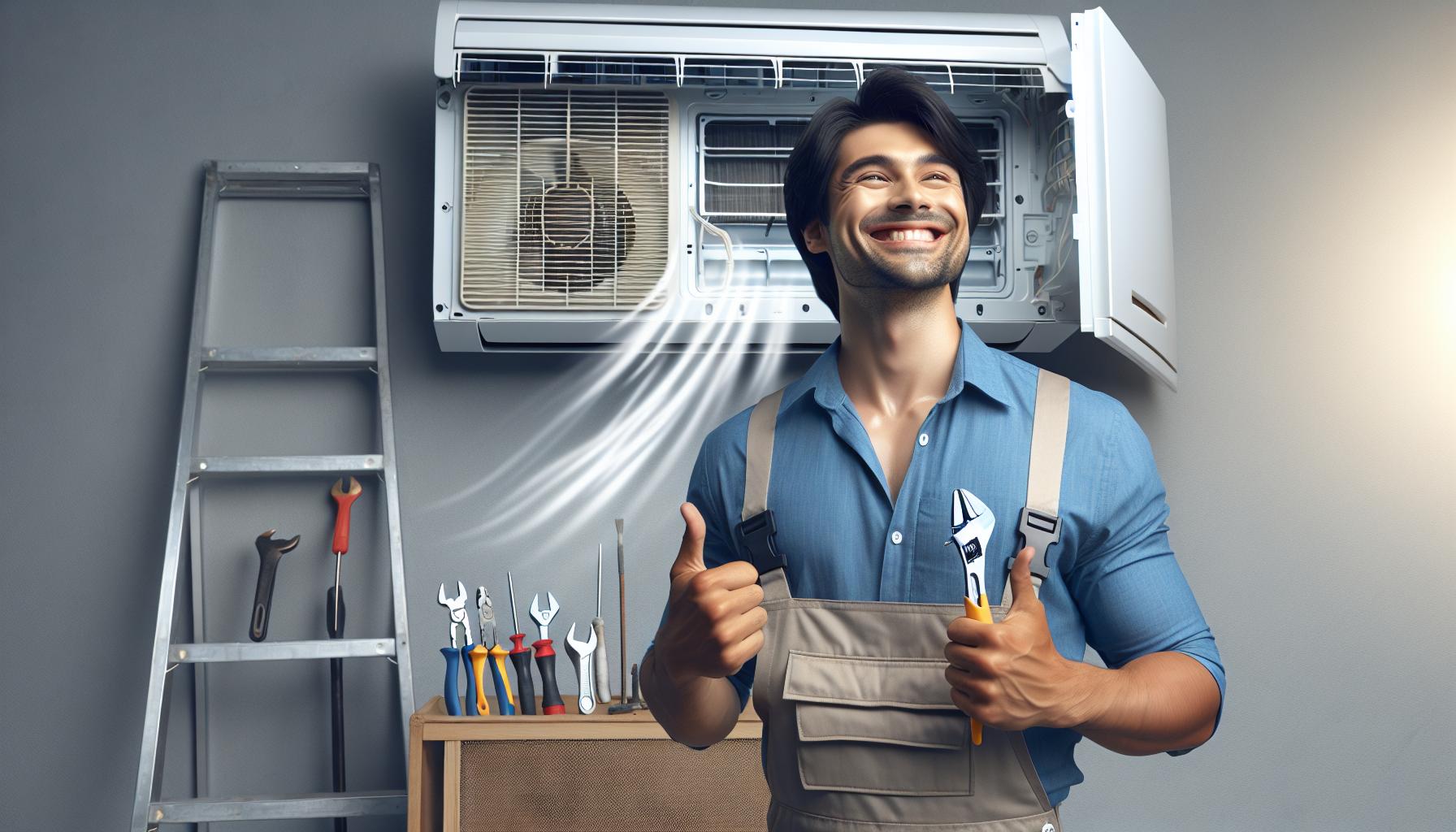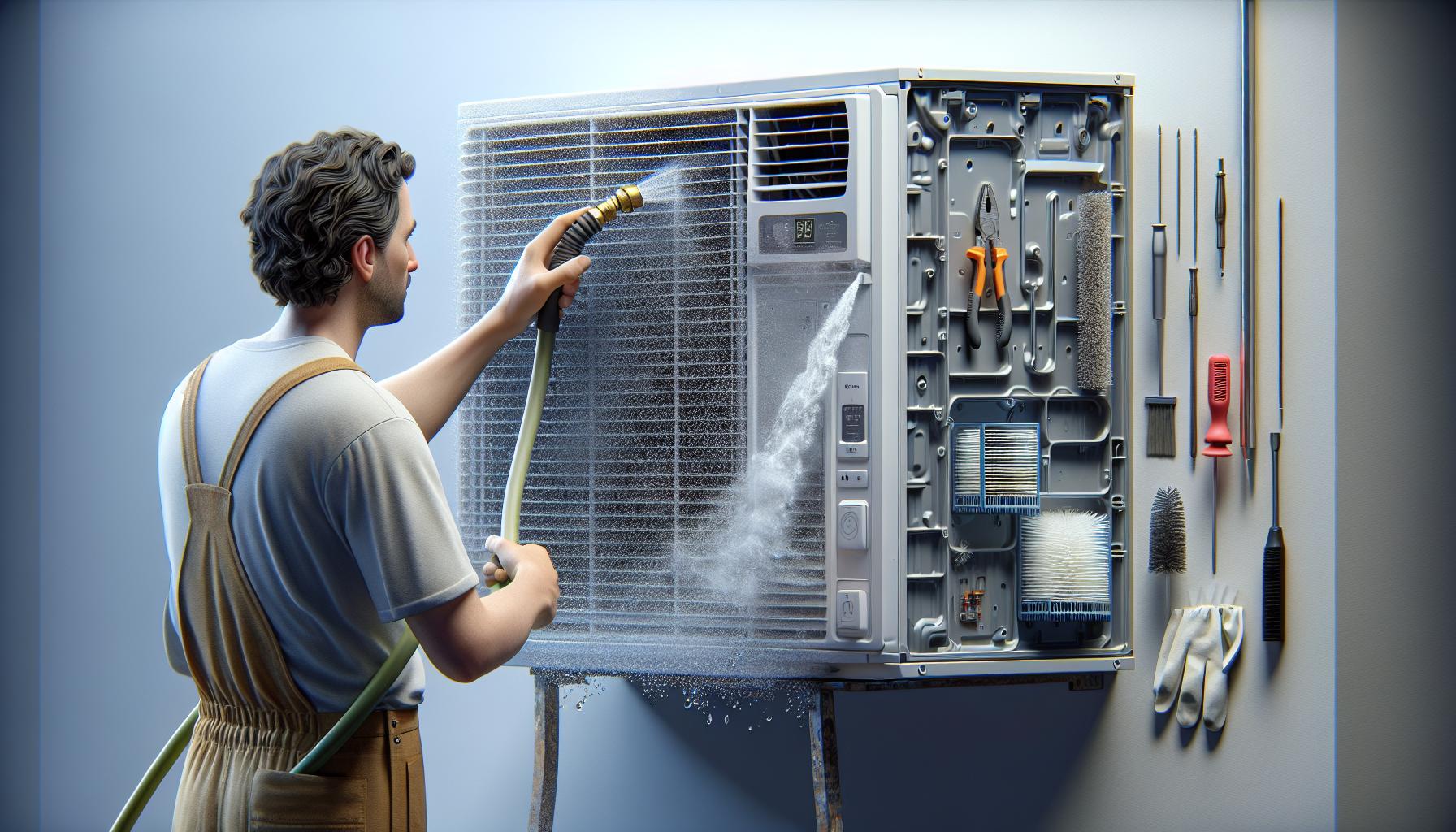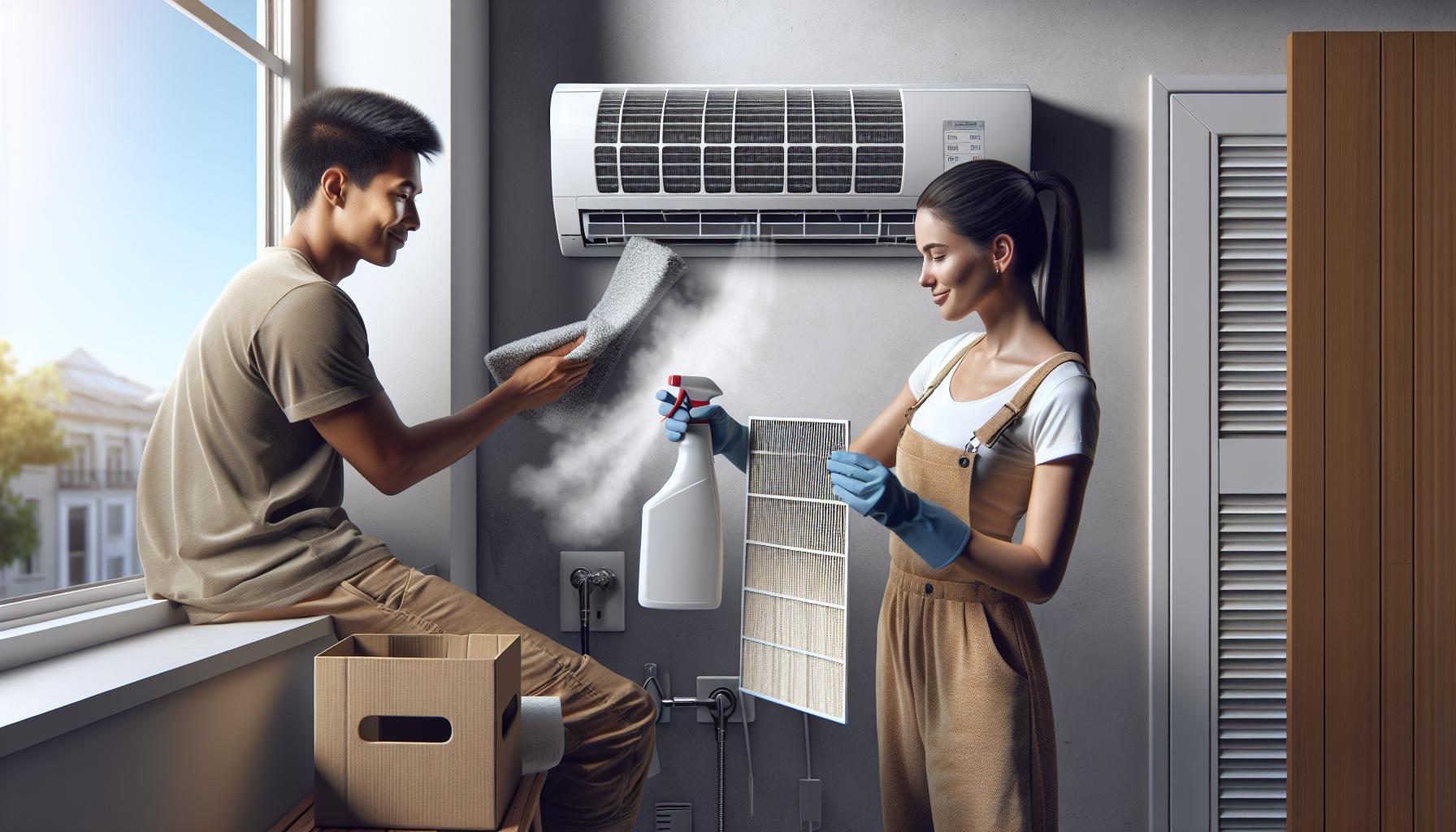Struggling with inconsistent hot water or none at all? Your Richmond water heater might just need a quick reset. It’s a common fix that can restore your system’s functionality without the need for a professional. In this article, you’ll learn the simple steps to safely reset your water heater and get your hot water flowing again.
Knowing how to reset your water heater is an essential skill that can save you time and money. We’ll guide you through the process, ensuring you’re back to enjoying warm showers and efficient heating in no time. Keep reading to find out how to tackle this task with confidence.
Understanding the Richmond Water Heater
Before diving into the reset process, it’s crucial to familiarize yourself with the Richmond water heater. Richmond is a well-respected brand in the heating and hot water industry, synonymous with durability and efficiency. Chances are, if you’re experiencing issues with your hot water, it’s not due to a lack of quality in the unit itself.
Your Richmond water heater comes with a number of safety features, one being the reset button. This button is a key component of the unit’s thermostat and is designed to prevent overheating. When the water temperature exceeds a safe level, the reset function activates, shutting down the heater to avoid potential hazards.
It’s also important to note that Richmond water heaters are equipped with an LED system that displays the operational status of the unit. The lights can indicate various states – from normal functioning to error codes that specify the nature of any issue. Knowing what these codes mean can be very helpful in troubleshooting before you attempt to reset the heater.
When you’re ready to reset your Richmond water heater, ensure you’ve turned off the power supply to avoid any accidents. Safety always comes first when dealing with electrical appliances. With the power off, you can then proceed to locate the reset button, typically found behind the insulation pad and the heater’s protective cover.
Let’s not forget about regular maintenance. Keeping up with regular checks on your Richmond water heater can prevent unexpected cold showers. Most problems arise not from sudden malfunctions but from gradual wear and tear that goes unchecked. Regular inspection of heating elements, anode rods, and the tank itself can prolong the life of your unit and ensure consistent access to hot water.
Signs that Your Water Heater Needs a Reset
Identifying when your Richmond water heater requires resetting is key to maintaining its efficiency and longevity. Pay Attention to These Tell-tale Signs:
- An unexpected lack of hot water suggesting the unit has tripped.
- The water temperature fluctuates more than usual, or the water is too hot or too cold.
- The LED status system is flashing an error code or showing an abnormal status.
- Unusual noises such as popping or hissing coming from the water heater.
- A recent power outage or surge that might have affected the system.
When You Encounter These Symptoms, it’s time to take action. Before you proceed to reset the water heater, ensure that you’ve turned off the power supply to avoid any electrical hazards. Remember, these signs don’t just indicate the need for a reset; they could also hint at underlying issues that might require professional attention. Regularly checking your water heater’s performance goes a long way in catching these signs early on.
By keeping an eye out for these indicators, you’ll be able to address problems with your water heater promptly and ensure that your system operates smoothly. If the issues persist after a reset, it may be time to call in a technician to investigate further. Remember, a well-maintained water heater is less likely to encounter disruptions, meaning you’ll have consistent access to hot water when you need it.
Precautions before Resetting the Water Heater
Safety is paramount when you’re dealing with any electrical appliance, and your Richmond water heater is no exception. Prior to attempting a reset, ensure you take the necessary precautions to avoid potential hazards.
Turn Off the Power Supply
The first step is to locate your home’s circuit breaker box and turn off the circuit that powers the water heater. This is a critical move to protect you from electrical shocks. Remember, the switch should be clearly labeled, but if you’re unsure which one it is, it’s better to turn off the main power switch.
Inspect for Any Signs of Damage
Before you proceed, give the water heater a quick inspection. Look for any noticeable signs of damage such as leaks, corrosion, or loose wires. These issues need to be addressed by a professional before you reset the system.
Test the Thermostat and High-Temperature Cutoff
Using a non-contact voltage tester is a smart way to double-check that there’s no electric current running to the water heater. Once you’ve confirmed the power is off, it’s advisable to test the thermostat and the high-temperature cutoff switch to ensure they’re in working order.
Check the Water Pressure
High water pressure can also affect the functioning of your water heater. Use a water pressure gauge to check the system’s pressure. The ideal range should be between 50 and 60 PSI. If the pressure is too high, it may have triggered the safety features of the heater to shut off.
Wear Protective Clothing
As an additional precaution, wearing protective gloves and eyewear can safeguard you against unexpected spills or debris. Make sure you’re dressed appropriately before you begin any sort of maintenance work.
Remember, if you’re ever in doubt or the steps above reveal more complex issues with your system, it’s essential to call a certified technician to handle it. Regular maintenance checks and addressing signs of malfunction early can help prevent the need for frequent resets and ensure a longer lifespan for your water heater.
Step-by-Step Guide to Resetting Your Richmond Water Heater
Resetting your Richmond water heater is a straightforward process that can help restore your system to proper functioning order after experiencing issues. Follow this step-by-step guide to ensure you do it correctly and safely.
Before you commence, ensure all safety precautions previously mentioned are adhered to. Have your protective gear on, and get ready to reset your water heater.
Locate the Reset Button
First, you’ll need to locate the reset button. For most Richmond water heaters, the reset button is red and situated above the thermostat. It’s often marked “reset” or may display a small triangle symbol. It could be hidden behind a panel which you’d need to unscrew to gain access.
Press the Reset Button
Press and hold the reset button for a few seconds until you hear a click sound. This indicates the button has been engaged. Release it after the click. If your water heater does not have a reset button, refer to your user’s manual for model-specific instructions.
Wait and Check for Operation
After you’ve pressed the reset button, wait a few moments. You should hear the water heater begin to operate within a minute or so. Listen for the sound of the heating element firing up. If it doesn’t, wait a couple of minutes before attempting to press the reset button again.
Restore Power and Monitor
After the reset, restore power to the water heater if you had turned it off earlier. Keep an eye on the water heater for a short period to ensure it is working effectively. Monitor for any unusual noises or failure to heat water which can indicate that a deeper issue may be present.
Remember, if you encounter any complications while resetting your system or believe there’s an underlying problem, reach out to a professional technician to address the issue. Regular maintenance checks are crucial for avoiding disruptions in your water heater’s operation.
Troubleshooting Tips if the Reset Doesn’t Work
Sometimes, after following the necessary steps to reset your Richmond water heater, you might find that it’s still not working as it should. When this happens, it’s time to delve into troubleshooting to pinpoint and resolve the issue.
Check the Power Supply
First, ensure that the power supply to your water heater is consistent. A tripped breaker or blown fuse can often go unnoticed.
- Verify that the circuit breaker is in the ‘on’ position.
- Check for any blown fuses in your fuse box.
- Ensure that the heater’s plug is securely inserted into the outlet.
Inspect the Thermostat and Heating Elements
Over time, the thermostat and heating elements can wear out, leading to a failure to reset.
- Examine the thermostat for any visible damage.
- Test the heating elements with a multimeter to confirm they’re in working order.
High Limit Switch Check
The high limit switch is a safety device that needs to be functioning correctly for an effective reset.
- Ensure the high limit switch isn’t in a permanently tripped state.
- Reset the high limit switch manually if necessary.
Water Temperature Settings
Incorrect temperature settings might prevent the system from reset.
- Adjust the temperature settings to the manufacturer’s recommended levels.
Contact Customer Support
Richmond’s customer service can offer guidance specific to your model.
- Reach out with your heater’s model and serial number for tailored assistance.
Call in a Professional
Persistent issues after a reset could indicate a more complex problem.
- If the above steps don’t yield results, it’s best to seek the help of a certified technician.
Remember that tinkering with your water heater could potentially void warranties or lead to further complications if not handled properly. Always proceed with caution and consider the manufacturer’s guidelines when attempting to fix any issues with your appliance. Regular maintenance checks are key to preventing unexpected failures and ensuring the longevity of your Richmond water heater.
Maintenance Tips to Prevent Future Issues
Keeping your Richmond water heater in top condition requires regular maintenance. By staying proactive, you avoid the frustration of unexpected cold showers or costly repairs down the line.
Inspect Your Water Heater Annually
Ensure you inspect your water heater at least once a year. Look for signs of wear and tear, such as:
- Water pooling around the base
- Rust on the tank or in your water
- Unusual sounds during operation
Check the Anode Rod
The anode rod protects your water tank from corrosion.
- Typically, anode rods last about 5 years
- Replace the rod when it’s significantly worn down to extend your tank’s life
Flush the Tank Regularly
Sediment build-up can reduce efficiency and damage your heater. Flushing the tank helps in several ways:
- Enhances heating efficiency
- Prolongs the lifespan of your water heater
- Prevents the build-up of harmful minerals
Test the Temperature and Pressure Relief Valve
The T&P valve is a safety feature that reduces excess pressure.
- Discharge the valve twice a year
- If it’s leaking or fails to operate, replace it immediately
Adjust Settings According to Seasonal Needs
Adjust the thermostat seasonally for optimal performance.
- In warmer months, lower the temperature to save on energy costs
- Increase it slightly in colder months for comfort
Regular maintenance not only prevents future issues but also ensures you’re not frequently resetting your water heater. By implementing these tips, you’ll maintain a reliable and efficient system year-round. Remember to refer to your Richmond water heater’s manual for specific maintenance advice tailored to your model.
Conclusion
Resetting your Richmond water heater can be straightforward when you follow the right steps. Remember to always prioritize safety and adhere to the manufacturer’s guidelines. If you’ve tried troubleshooting and the problem persists, don’t hesitate to seek professional assistance. Regular maintenance is key to avoiding future issues and ensuring your water heater operates efficiently for years to come. By keeping an eye on the anode rod and flushing the tank periodically, you’ll extend the life of your unit and enjoy the comfort of reliable hot water. Stay proactive about your water heater’s health and you’ll save time and money down the line.
Related Posts:
- Fixing Richmond Water Heater Gas Valve Issues: A…
- Decode Richmond Water Heater Blinking Light Codes:…
- Set Your Richmond Heater: Temp Adjustment Guide
- Fixing Richmond Heaters: No Hot Water Troubleshoot Guide
- Richmond Tankless Heater Fixes: Troubleshooting Made Easy
- Reset Your Navien Tankless Heater: A Simple Guide




